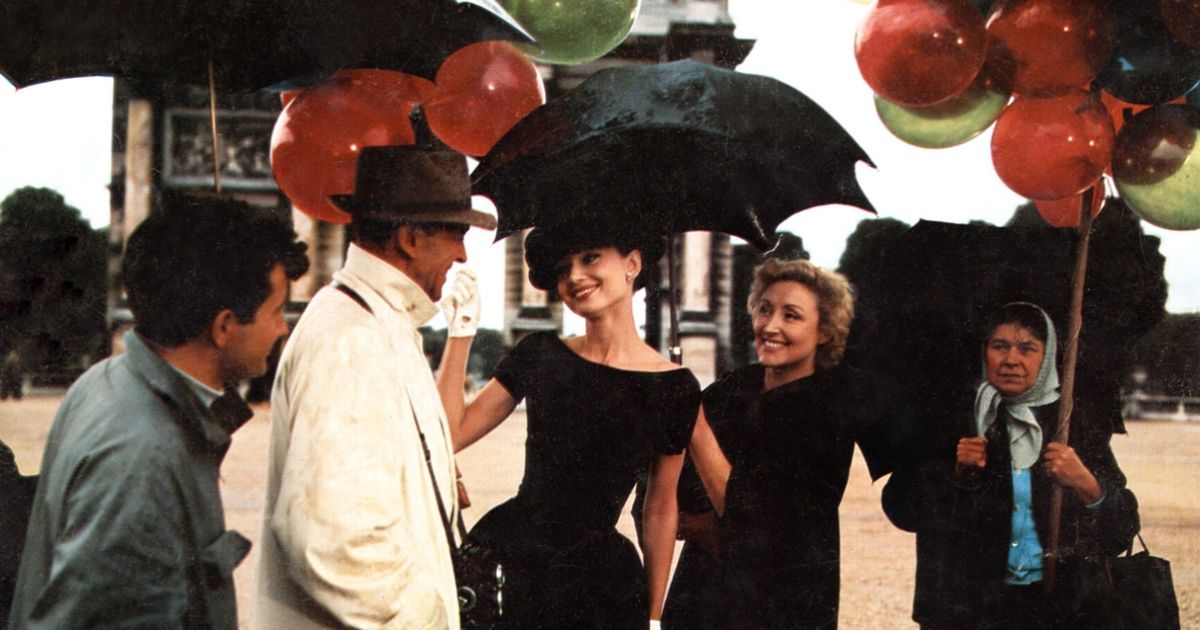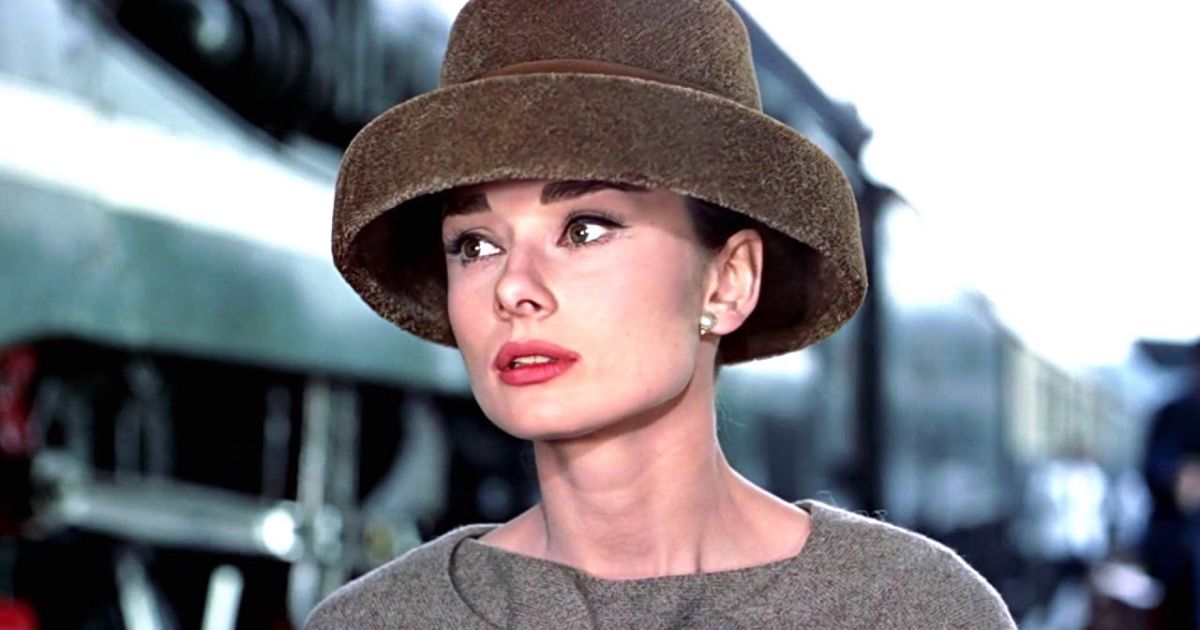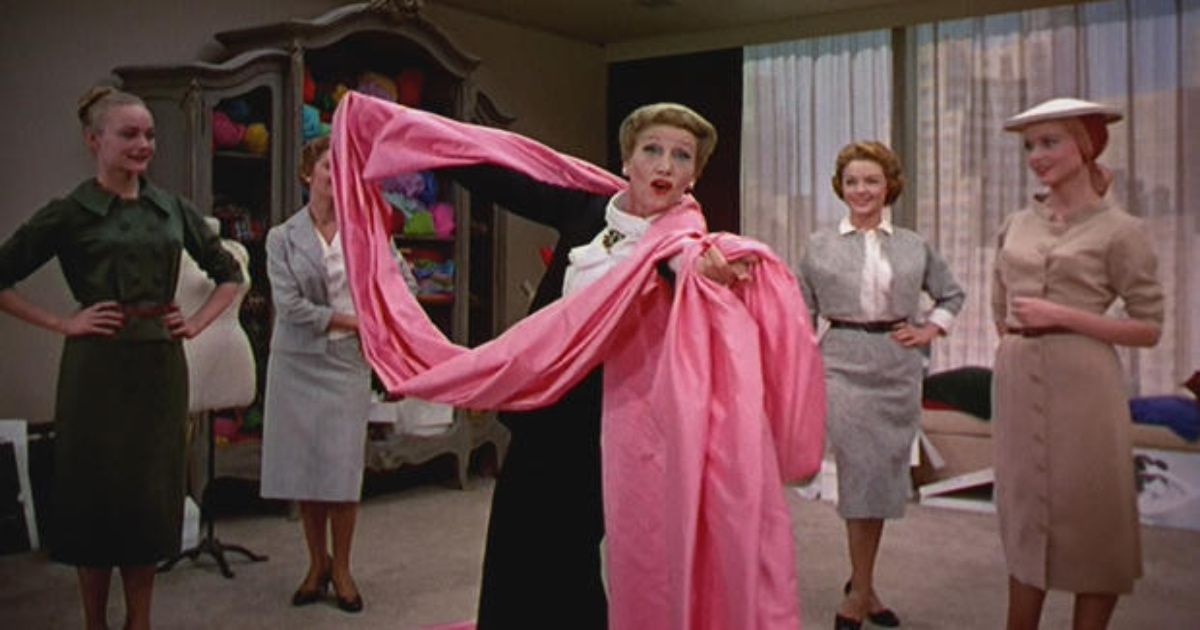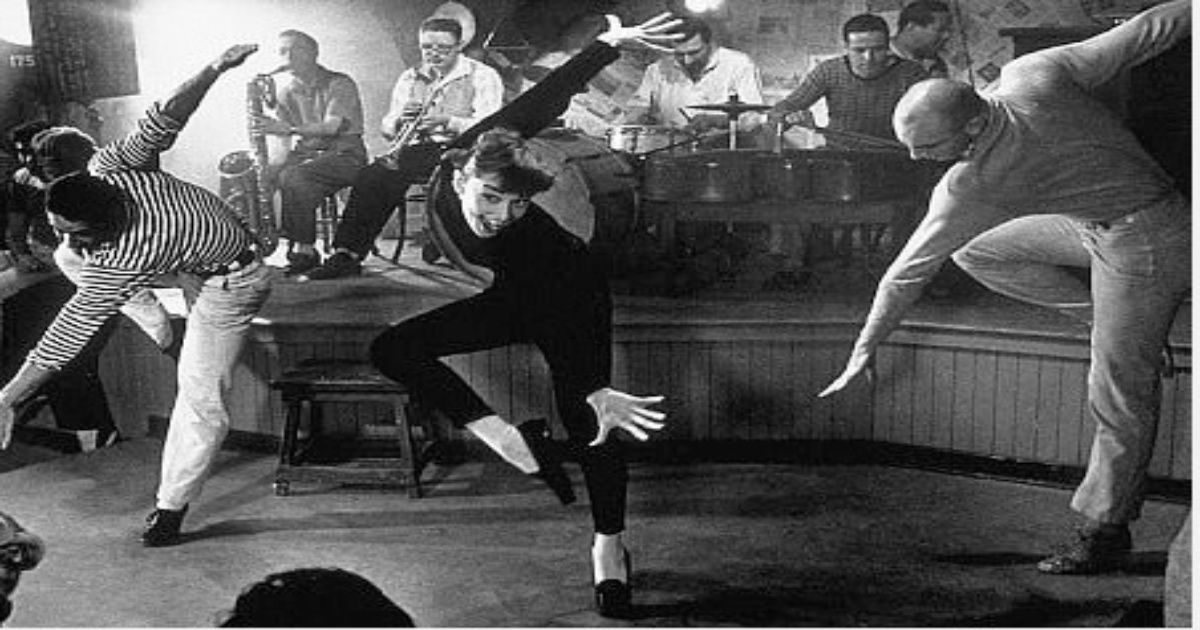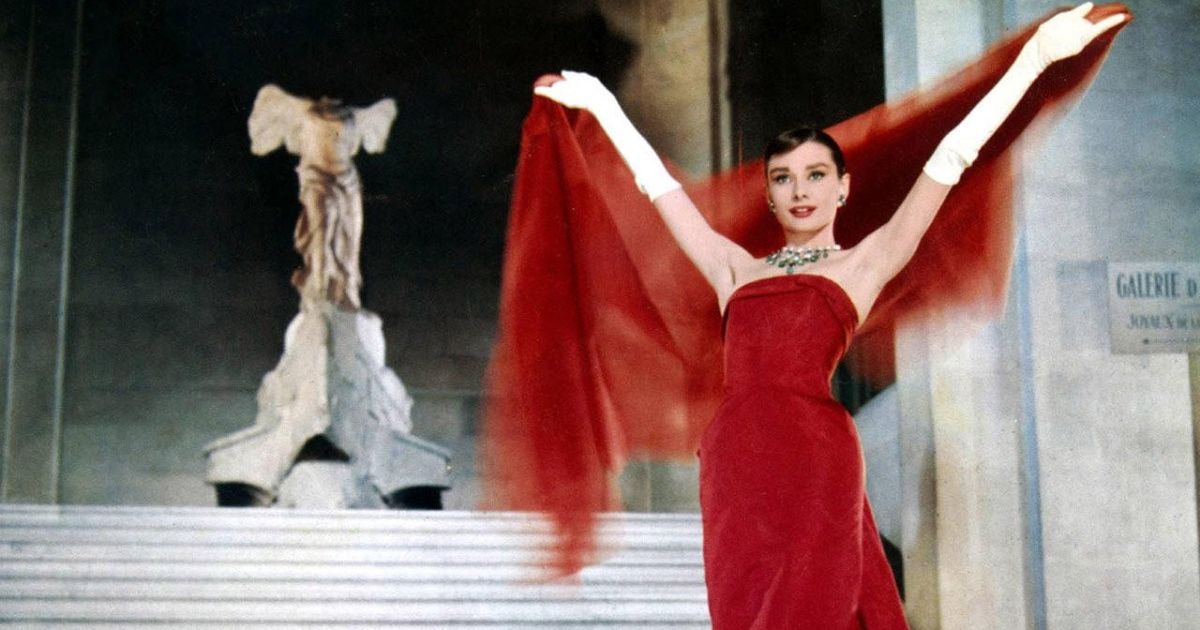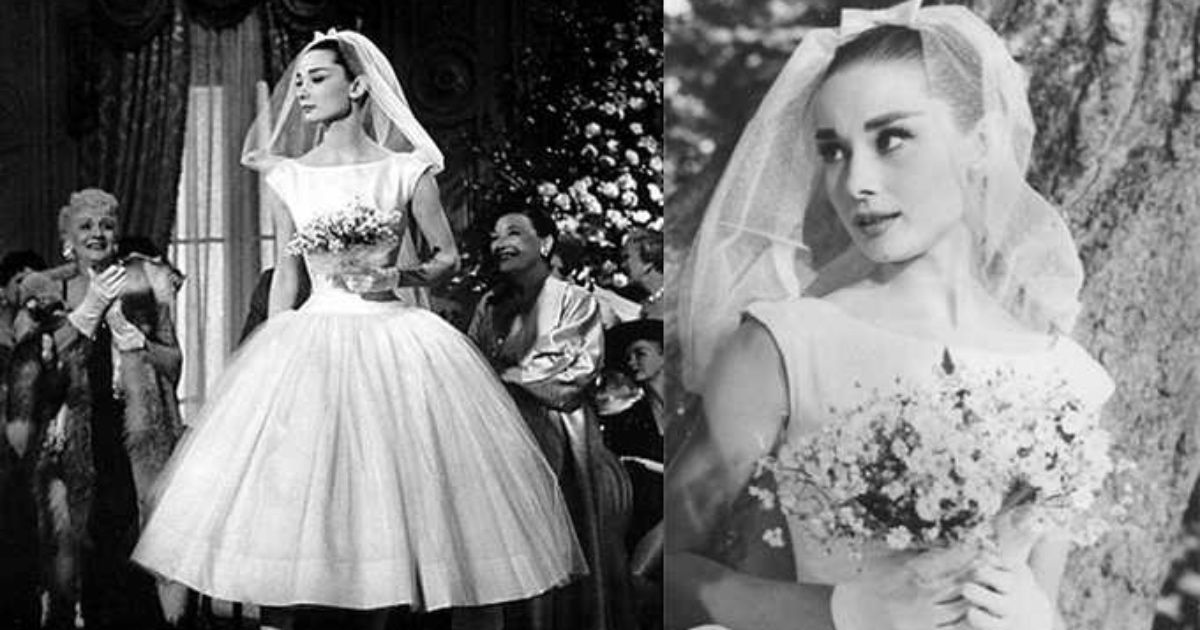[ad_1]
While real-life trends tend to influence what characters wear on the screen, the relationship between fashion and film quickly turns more complex, the film becoming a medium that actually generates the trends and has lasting impacts on fashion. Long ago The Devil Wears Prada (more than half a century later), Funny Face showed the curiosities and adversities of the fashion industry and closely linked fashion and cinema.
This witty and joyful caricature of the beauty business’ underbelly can be loved for many things: a simple but touching Cinderella story, wonderful music from the legendary Roger Edens, and, of course, breathtakingly beautiful visuals and costumes.
A classic of Golden Age Hollywood musicals, Funny Face is essentially a fashion magazine that came to life. The story revolves around Quality Magazine editor Maggie Prescott and photographer Dick Avery, who search for a new model that can “think as well as they look,” and an ordinary bookkeeper girl Jo that gets thrown into the mix. Despite the straightforwardness of the story, the director touches on an important topic with visionary insight, regarding fashion in particular — the predominance of individuality over a merely perfect picture.
How Funny Face Came To Be
Funny Face was largely inspired by the fashion photographer Richard Avedon and his relationship with his wife of six years, the model and actress Doe Avedon. Not only did Richard Avedon become the prototype of the male lead Dick Avery, played by Fred Astaire, but he also took an active part in the creation of the movie, filming backstage and helping with creative direction. Avedon’s humanistic hand can be felt all over the production, especially recognized in some moments, like, for example, the Think Pink! scene.
Funny Face was already a Broadway musical but had little to do with the subsequent big screen adaptation. Only the title and the title song, as well as four more numbers, were taken from it. The plot, however, was pulled from the libretto Wedding Bellswritten by the Avedons’ friend Leonard Gersh. Wedding Bells was never produced, and Gersh sold the film rights to MGM Studios, where it caught the eye of Roger Edens, known as a master of extravagant and interesting musicals. The great Stanley Donen (who also directed Audrey Hepburn in the brilliant Charade) was invited to make a big screen adaptation.
The film should be watched if only to understand the appeal of the amazing actress Audrey Hepburn. Hepburn does the singing (unlike in My Fair Lady) and dancing herself, not to forget her amazing chemistry with Fred Astaire.
Funny Face As An Encyclopedia of 50s Fashion
The story told by the costumes in this movie is one of changing spirits, a departure from Balenciaga’s straight lines for Dior’s New Look, and the rising popularity of functionality over opulence. Editor-in-Chief Maggie Prescott in Funny Face was based on Diana Vreeland, then editor-in-chief of Harper’s Bazaar. Vreeland herself, by the way, was categorically vexed by the film and even forbade mentioning its name in her presence. Maggie Prescott’s looks were inspired by the style of Cristobal Balenciaga, Vreeland’s favorite designer.
It’s necessary to point out that Dior was not the one to come up with the New Look silhouette but rather the one who popularized it. At the time, almost all designers worked with variations on the New Look theme: from the Briton Hardy Amies, appointed in 1952 as the personal tailor of Elizabeth II, to the Paquin fashion house.
During the 1950s, the direction of sportswear was rapidly developing in the US, with functional and relatively inexpensive clothing becoming more popular as opposed to the status and elite haute couture. More and more working women prefer comfortable trousers and turtlenecks to skirts and dresses. Perhaps it is not too far-fetched to say that Funny Face helped to make black cigarette trousers the most fashionable item among progressive, bohemian girls.
The scene where Jo appears in a beatnik all-black look is a key one. This, of course, is about Jo’s improvisational dance in a Parisian underground café (the choreography was staged by Eugene Loring). There is a lot of symbolism in this episode, and we are once again reminded why the childlike Jo was chosen as the personification of the emerging new era in fashion, where there is less and less room for high-flown and often ponderous haute couture.
The scene is also interesting because initially, Hepburn was against dancing in white socks because they would ruin the all-black silhouette and shorten her legs. However, Donen insisted on socks instead of ballet flats as it was Hepburn’s only solo dance number, and the director wanted the audience to see her every move, not blend into the background. After viewing the footage, Hepburn wrote a note to Donen, admitting he was right.
The Platonic Love Affair of Audrey Hepburn and Givenchy
The daring and exceptional Edith Head (a woman unfamiliar with the word ‘humble’), the inspiration for The Incredibles’ Edna Mode, was in charge of the costume design for Funny Face. However, there were actually two costume designers working on it Funny Face instead of one, the same arrangement as in Sabrinafor which Edith Head won an Oscar while Hubert de Givenchy wasn’t even mentioned in the credits.
Funny Face was the first time when he was credited as the fashion designer who created costumes for the film, and Vogue rightfully singles out Hepburn’s incredible dresses in this film as one of her greatest Givenchy moments on screen.
Hepburn was the original brand ambassador of “the elegant master of devastating chic,” as Givenchy was named by The Guardian. When Hepburn approached Givenchy to design her costumes for Sabrina, he declined her invitation but by the end of the day he became enamored with her, and thus the life-long partnership began. Hepburn requested that Givenchy design all of her future costumes starting with Funny Facesaying, “His are the only clothes in which I am myself.”
The end result turned out to be “a lovely phantasm made up of romance, tourism and chic,” as described by The New York Times in their review. Funny Face was both a satire of high fashion and a heartfelt admiration of it… while also paying tribute to the intellectuality of the contemporary generation.
[ad_2]
Source link
